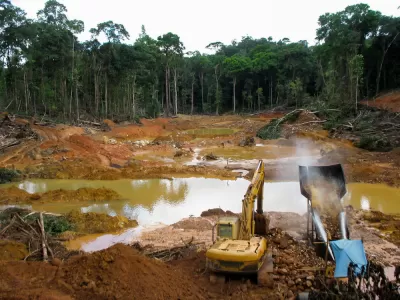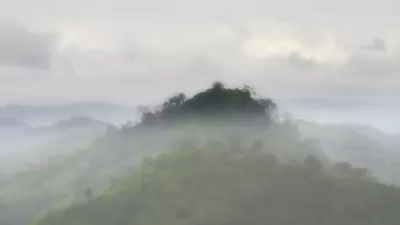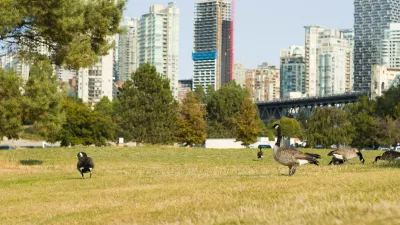A new study puts a number of the risk of land use to the planet's biodiversity.

"As many as 1,700 species are facing extinction in the next half-century, thanks to humans reshaping their natural habitats," reports Chase Purdy.
That news delivered in a study by Yale researchers published recently in the Nature Climate Change journal. The study lists species, including many that will be familiar to the layperson, according to Purdy: "monarch butterflies, red-crowned cranes, bearcats, and Siamese crocodiles—all of them threatened by the same, almost-certain doom."
The complicity spreads beyond the geographic reach of the extinctions: "even if some of the animals live in remote parts of the planet, people in the the [sic] developing world are still complicit in their demise. The demand for tropical hardwood floors, palm oil, and soybeans—among other things—fundamentally reshapes habitats so drastically that life for many of these animals becomes too tough to navigate."
FULL STORY: Human land use will likely drive 1,700 species to extinction

Trump Administration Could Effectively End Housing Voucher Program
Federal officials are eyeing major cuts to the Section 8 program that helps millions of low-income households pay rent.

Planetizen Federal Action Tracker
A weekly monitor of how Trump’s orders and actions are impacting planners and planning in America.

Ken Jennings Launches Transit Web Series
The Jeopardy champ wants you to ride public transit.

Crime Continues to Drop on Philly, San Francisco Transit Systems
SEPTA and BART both saw significant declines in violent crime in the first quarter of 2025.

How South LA Green Spaces Power Community Health and Hope
Green spaces like South L.A. Wetlands Park are helping South Los Angeles residents promote healthy lifestyles, build community, and advocate for improvements that reflect local needs in historically underserved neighborhoods.

Sacramento Plans ‘Quick-Build’ Road Safety Projects
The city wants to accelerate small-scale safety improvements that use low-cost equipment to make an impact at dangerous intersections.
Urban Design for Planners 1: Software Tools
This six-course series explores essential urban design concepts using open source software and equips planners with the tools they need to participate fully in the urban design process.
Planning for Universal Design
Learn the tools for implementing Universal Design in planning regulations.
Heyer Gruel & Associates PA
Ada County Highway District
Institute for Housing and Urban Development Studies (IHS)
City of Grandview
Harvard GSD Executive Education
Toledo-Lucas County Plan Commissions
Salt Lake City
NYU Wagner Graduate School of Public Service





























